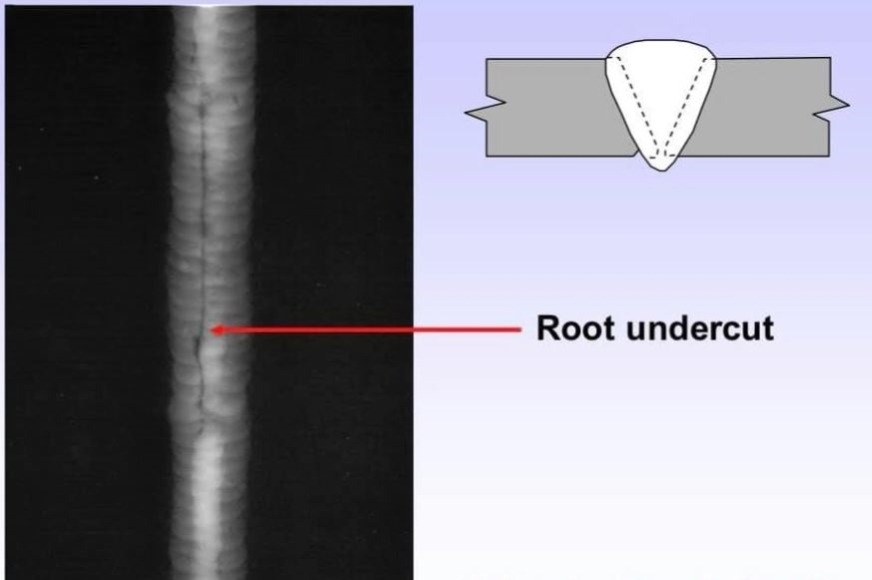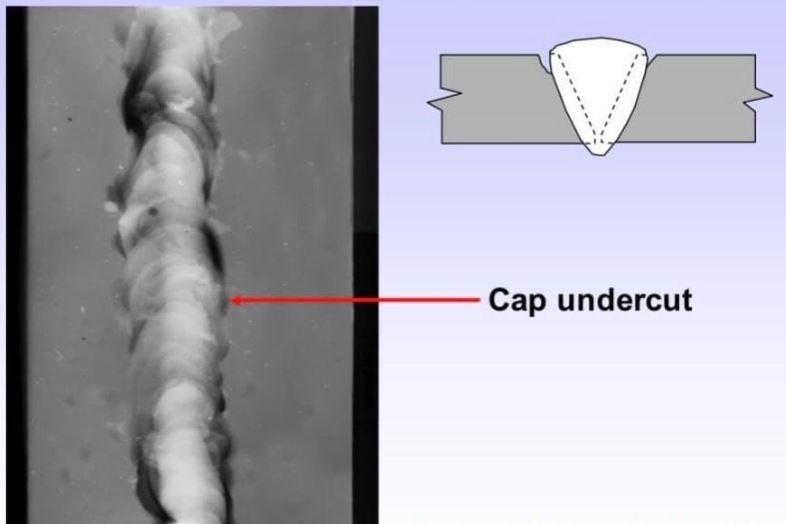Ideal Practices for Preventing Weld Undercut: Understanding the Fundamentals
Ideal Practices for Preventing Weld Undercut: Understanding the Fundamentals
Blog Article
Vital Tips for Welders: Avoiding Undercut Welding and Ensuring Stronger Weld Joints
In the world of welding, achieving sturdy and strong weld joints is the keystone of generating high-grade work. One common obstacle that welders typically run into is undercut welding, which can endanger the honesty of the weld joint.

Recognizing Undercut Welding
Undercut welding is a typical welding issue that happens when the weld steel stops working to correctly fill up the groove and causes a groove-like depression along the weld grain. This flaw weakens the weld joint, making it vulnerable to cracking and failing under tension. Undercutting can be caused by various factors, including extreme welding existing, high welding speed, incorrect electrode angle, wrong electrode size, and poor welding technique.
One of the primary reasons for undercut welding is an inequality between the welding existing and the welding rate. If the welding current is expensive or the welding speed is as well quickly, the weld steel may not adequately load the groove, causing damaging. Additionally, using an electrode that is also big can cause a comparable result, as the excess metal can not properly flow into the groove.
To stop undercut welding, welders must guarantee they are utilizing the correct welding criteria, keep a suitable electrode angle, pick the proper electrode size, and practice appropriate welding techniques. By dealing with these aspects, welders can lessen the danger of undercutting and develop stronger, a lot more dependable weld joints.
Appropriate Welding Method
Effective welding method plays a crucial role in making certain the quality and honesty of weld joints. One fundamental aspect of correct welding method is keeping the correct angle and range between the welding weapon and the work surface.
In addition, a regular and constant hand activity is necessary for producing strong and durable weld joints. Welders should aim for smooth, uniform movements to make sure even distribution of the weld product. Proper manipulation of the welding gun and filler product is also essential to accomplishing optimum infiltration and combination.
In addition, regulating the heat input and choosing the appropriate welding criteria based on the material being welded are critical consider attaining top quality welds - Preventing weld undercut. Welders ought to follow the advised setups supplied by welding treatment requirements and adjust them as needed based on the certain demands of the job. By grasping proper welding techniques, welders can considerably enhance the stamina and reliability of their weld joints
Choosing the Right Electrode
When thinking about the relevance of selecting the best electrode in welding applications,Maintaining the correct angle and distance between the welding gun and the workpiece is essential. The selection of electrode plays a crucial role in establishing the quality and strength of the weld joint. Electrodes can be found in various kinds, each created for specific functions and products.
To start with, picking the ideal electrode diameter is crucial. Thinner electrodes are appropriate for welding slim products, while thicker electrodes are much better for thicker products and higher warmth applications. Matching the electrode diameter to the thickness of the work surface helps achieve a well balanced weld.
Second of all, comprehending the material make-up of the electrode is vital. Various electrodes are made for welding particular products like steel, stainless steel, light weight aluminum, or cast iron. Making use of the right electrode product ensures great combination and decreases the danger of flaws in the weld.
Finally, thinking about the welding placement and strategy is vital when choosing the electrode kind. Particular electrodes are better suited for overhead or vertical welding positions, while others function well for level or straight settings. Picking the right electrode based upon the welding strategy boosts the overall weld quality and honesty.
Preparing the Base Metal
To make certain an effective welding process, what first steps should be taken when preparing the base metal for welding? Additionally, any type of existing weld material or residue from previous welding must be removed to make certain a tidy surface area for the brand-new weld.

Carrying Out Post-Weld Examinations

After performing these evaluations, welders need to compare the outcomes against market requirements and task demands to make certain that the weld joint satisfies all essential requirements. Any kind of inadequacies or deviations uncovered throughout the post-weld examination should be immediately addressed via check my source ideal corrective actions to guarantee the weld's stability. By faithfully executing post-weld assessments and quickly addressing any kind of problems, welders can maintain the top quality and reliability of their work, eventually adding to the safety and security and durability of the welded structures.
Conclusion

To conclude, preventing undercut welding and making sure more powerful weld joints need a combination of appropriate welding method, choosing the right electrode, preparing the base steel properly, and performing post-weld evaluations. By comprehending the reasons for undercut welding and executing the required safety measures, welders can create top quality weld joints that fulfill sector criteria and guarantee the architectural stability of the bonded components.
Undercut welding is a common welding problem that discover this takes place when the weld metal fails to effectively load the groove and results in a groove-like anxiety along the weld grain (Preventing weld undercut). Damaging can be triggered by different factors, including excessive welding current, high welding rate, improper electrode angle, incorrect electrode size, and inadequate welding strategy
One of the major factors for undercut welding is an inequality in between the welding current and the welding rate. If the welding current is also high or the welding rate is too fast, the weld steel may not adequately load the groove, leading to damaging.Keeping the right angle and range between the welding gun and the workpiece is fundamental when thinking about the importance of picking the ideal electrode in welding applications.
Report this page